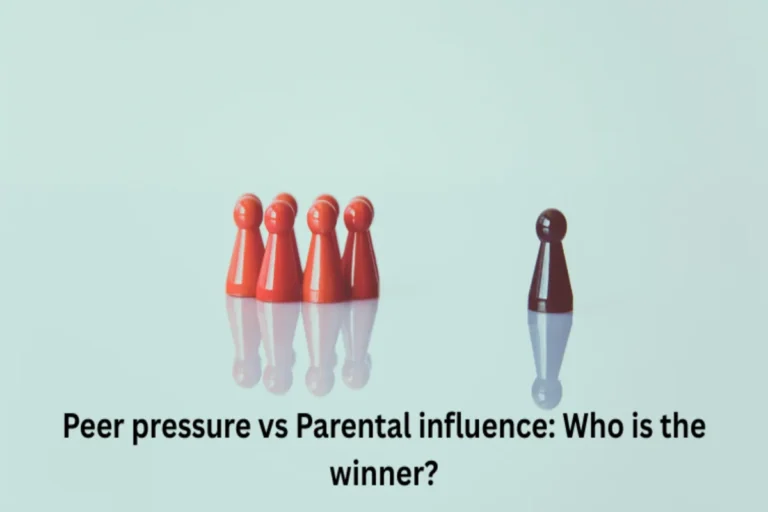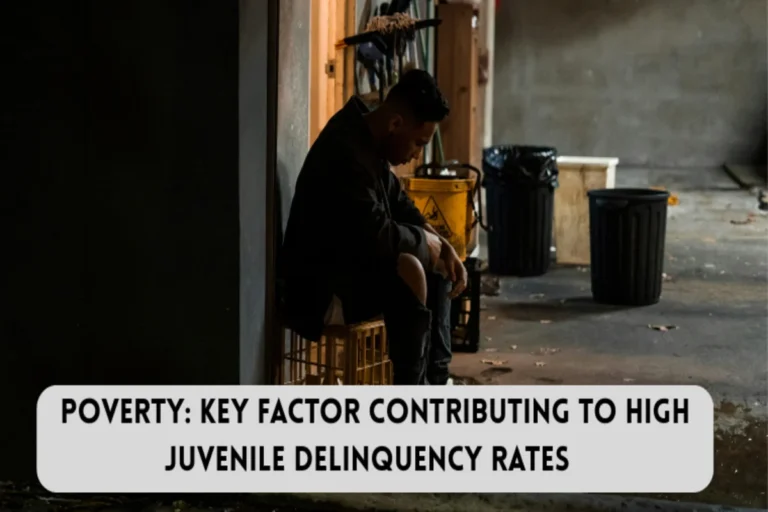
The adolescent years bring physical changes together with emotional maturation and lasting habit development. The influence of peers attains its peak level during this specific time period which determines choices regarding appearance and moral standards. Most people associate peer pressure with dangerous activities yet its role in contributing to peer pressure and teen obesity remains poorly understood as an urgent issue. Understanding the link between peer pressure and teen obesity is crucial for promoting healthier behaviors during these formative years.
Since 1980 adolescent obesity rates have increased to three times their original number and today twenty percent of all U.S. teenagers fall into the obese category (CDC, 2021). The problem extends beyond personal choice since it creates a complex connection between social interactions and cultural standards together with psychological weaknesses. By studying peer pressure’s influence on unhealthy eating behaviour together with its effects on physical activity and mental health problems we reveal an intricate system of issues that need immediate action.
The Invisible Hand of Peer Influence: How Social Norms Shape Behavior
Social norms work through the invisible hand of peer influence to form behavioral patterns. Social creatures by nature exist within every person but teenagers show extreme sensitivity to peer opinions due to their brain development. The reward system in the brain reacts strongly to social approval at puberty while the part of the brain responsible for decision-making remains less developed. Because adolescents weigh social acceptance more heavily than rational decision-making their brains create an imbalance that leads them to choose conformity over wise actions including health-related choices.
Food as a Social Currency
Teenagers primarily develop social bonds through meals and snacks they share. Teens use the act of eating fast food and sharing pizza and candy with friends as ways to express their group identity. Scientific research published in Appetite in 2019 showed teens consume double the amount of calories with friends instead of alone and they tend to choose foods with high sugar and fat content to fit in with their group. Society continues to condemn wholesome foods including salads and fruit which creates additional social stigma around eating healthily. A student who brings their lunch with vegetables will experience humiliation through ridicule by their peers who say things like “You’re eating like a rabbit.” Unhealthy norms force individuals to adopt them in order to prevent social rejection.
The “Cool Factor” of Junk Food
Unhealthy foods gain popularity through their attractive image in the market. The fast food industry along with soda manufacturers and snack producers has used marketing strategies to equate their products with rebellion and social popularity. McDonald’s and Coca-Cola among other brands reach American teenagers through sports sponsorships and digital marketing to establish their brands as part of youth culture. The items become group identity markers when peers endorse them by sharing a TikTok video featuring a group eating a large fast-food meal. According to a Pediatrics study from 2020 teens who ate at fast food restaurants with friends developed obesity at rates 30% higher than their peers who consumed healthy home meals during the subsequent two years.
Groupthink and Exercise Avoidance
Group pressure negatively affects the practice of physical exercise. The fear of public criticism makes numerous students stay away from gym classes and sports activities. Being overweight during adolescence brings stress about switching into locker rooms and getting chosen last for athletic teams. According to a survey published in the Journal of Youth and Adolescence during 2020 obese teenagers chose to stay home from physical education classes because they did not want to face ridicule. Active teenagers minimize their exercise activities to prevent labeling as fixated or socially unattractive.
Social Media: Amplifying Unhealthy Trends in the Digital Age
The Digital Age has brought about Social Media which both strengthens and damages healthy trends among teenagers. The way social media affects teenagers is complex because it helps them connect with peers but simultaneously affects their physical well-being. Algorithms on platforms such as Instagram TikTok and Snapchat drive the formation of social norms because they display content that gets the most attention.
Viral Challenges and Normalized Overeating
Mukbang videos and eating challenge content have spread throughout social media platforms while promoting overeating behavior. Mukbang creators and social media content producers promote excessive food consumption through their “What I Eat in a Day” videos as well as their “mukbang” eating trend. The University of Connecticut conducted a 2023 study which revealed that frequent viewers of mukbang content doubled their chances of developing binge-eating habits. TikTok challenges about junk food hauls and calorie-rich smoothies present unhealthy eating behaviors as exciting and desirable pursuits.
The Illusion of Perfect Bodies and Emotional Eating
The perception of flawless physical body shapes leads people to use food as a coping mechanism to manage their emotions.Despite its promotion of hedonistic tendencies social media maintains unreasonably strict standards for body perfection. The combination of image editing software and fitness influencers demonstrates unattainable body standards which makes numerous teenagers feel insufficient about their bodies. Some individuals deal with this pressure by turning to emotional eating. The 2022 APA study discovered that social media-related anxiety and loneliness caused 35% of teenagers to use food as a coping mechanism.
Algorithmic Reinforcement of Bad Habits
Social media platforms maximize user interactions at the expense of user wellness. Users who click on food content will experience a feedback loop that strengthens their behavior toward either strict dietary tips or extreme junk-food-related content. Teen obesity tends to increase because young people adopt food trends and unhealthful eating habits they find popular through their peers. Weight-loss seekers who visit online forums about dieting may encounter laxative tea advertisements while snack review watchers encounter fast-food advertising.
Psychological Traps: Conformity, Shame, and the Cycle of Weight Gain
The combination of psychological pitfalls such as conformity along with feelings of shame leads to weight gain in a continuous pattern. The connection between peer pressure and obesity exists as both a psychological and behavioral issue. The process of joining peers creates brief periods of comfort for students who face social anxiety or feel insecure.
The Comfort of Conformity
Eating high-calorie foods functions as a method for teenagers to establish bonds while turning down group standards leads to social isolation. The need to fit in with peers leads students to share heavy meals which serves as a social bonding activity while rejecting group standards puts them at risk of social isolation. Dr. Sarah Jensen who focuses on adolescent health as a clinical psychologist points out that food functions as a fast solution for social acceptance. When teens decline to share pizza with their friends they feel as though they are denying their friendship.
Weight Stigma and Mental Health
Being obese leads students to endure continuous harassment both on and off school grounds. According to the National Institutes of Health (2023) obese adolescents suffer weight-based harassment at rates reaching 63% which leads to depression along with anxiety and suicidal thoughts. The discrimination against obese teens leads them to stay away from healthy actions which results in their choosing inactive activities like video games or TV marathons for comfort through eating.
The Vicious Cycle of Emotional Eating
The stress of peer rejection activates cortisol production which leads people to desire more fatty or sweet foods. The repetition of this pattern progressively shapes the brain’s reward system into a default mechanism that selects unhealthy eating behaviors. A research published in JAMA Pediatrics (2021) demonstrated that middle school social exclusion led to a 70% increased risk of obesity among teens when they reached high school age.
Health Consequences: A Lifelong Burden
The long-term effects of obesity in teenagers create lasting medical problems and financial hardships beyond their teenage years.
Early-Onset Chronic Conditions
- Type 2 Diabetes: The Centers for Disease Control and Prevention (CDC) reports that youth diabetes diagnoses have risen by 95% since 2001 (2023).
- Cardiovascular Disease: Medical studies show that obese teenagers develop arterial plaque which matches the cardiovascular health of 45-year-olds (American Heart Association, 2022).
- Joint Damage: Joints under excessive weight suffer from strain during bone development thus raising the possibility of osteoarthritis.
Mental Health and Academic Impact
Obesity creates a vicious cycle with depression and anxiety which ultimately causes students to miss school and perform poorly academically. According to research published by the NIH in 2023 obese high school students were 40% more likely to abandon their studies than their non-obese peers.
The Economic Toll
The projected healthcare expenses due to obesity among teenagers will reach $250 billion during the year 2030. Chronic illness combined with premature death results in increased lost productivity which worsens the economic burden.
Combating the Crisis: A Multifaceted Approach
Systemic changes in educational institutions and family units and social environments form necessary steps to tackle the connection between peer pressure and obesity.
1. Education and Empowerment
- Nutrition Literacy: Schools must implement educational programs which teach students to recognize marketing ploys in food products and read nutrition information effectively. Through Cooking Matters and similar programs teens gain abilities to create nutritious meals at affordable costs.
- Resilience Training: Students learn to defy destructive social norms through social-emotional learning (SEL) curricula. Students learn to respond to situations by saying “I am focusing on healthy eating so you should join me.”
2. Parental and Family Engagement
- Modeling Healthy Habits: Family members can establish healthy habits by cooking meals together and engaging in physical activities such as hiking and biking. The practice of discussing peer pressure helps students understand that everyone faces such challenges and learn how to solve them together.
- Screen Time Boundaries: Parents need to check the social media usage and watch the content with the child to discuss negative messages.
3. Policy Interventions
- Regulating Junk Food Marketing: The Governments should prohibit all forms of advertising that promote sugary drinks, fast food, and snacks to teenagers based on Chile’s 2016 law.
- School Wellness Programs: School wellness programs should include daily physical exercise and healthy snacks such as fruits, nuts and yogurt instead of vending machines snacks.
4. Harnessing Positive Peer Influence
- Peer-Led Initiatives: The Teens Take Charge program allows students to lead healthy cafeteria menu initiatives which uses social dynamics to promote positive change.
- Inclusive Fitness Communities: Exercise spaces should be free from judgment through the establishment of safe environments such as body-positive dance clubs and LGBTQ+-friendly yoga classes.
The link between peer pressure and teen obesity demonstrates that health exists outside personal boundaries and affects communities as a whole. Teens will learn to choose their well-being over conformity by dismantling toxic norms while creating spaces that celebrate healthy choices. Health education must be a team effort because educators must fight diet culture while parents demonstrate balance instead of dietary restrictions and policymakers must regulate corporate behavior. A generation stands at risk unless we establish health and self-acceptance and resilience as the main priorities.


